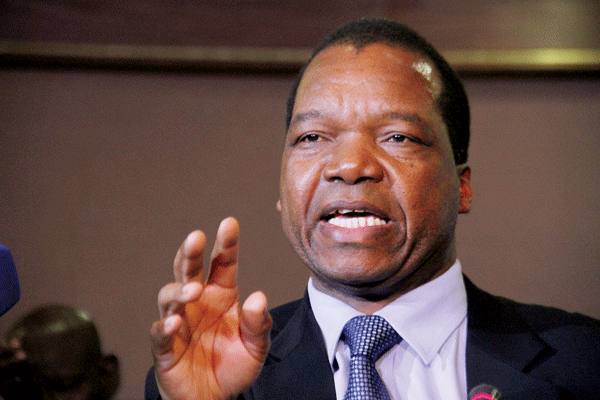
ZIMBABWE’s mining industry contributed half of the US$4,8 billion export revenues generated during the third quarter ended September 30, 2020, the Reserve Bank of Zimbabwe (RBZ) has said.
BY TAURAI MANGUDHLA/FIDELITY MHLANGA
RBZ governor John Mangudya said mining industry export receipts rose by 14% to US$2,4 billion during the period.
“I want to assure you that we are getting forex mainly from the mining sector,” Mangudya told industry executives during the launch of the 2021 State of the Mining Sector Survey.
“We are also getting foreign currency from government in terms of duty and taxation.
“You are doing a fantastic job as a mining sector. The forex receipts include all exports and diaspora remittances.
“You must note that the mining sector’s growth (rate) is above export receipts growth. It has been a major driver.”
He said the mining sector had underpinned exchange rate stability at the foreign currency auction system that was introduced in June.
- Chamisa under fire over US$120K donation
- Mavhunga puts DeMbare into Chibuku quarterfinals
- Pension funds bet on Cabora Bassa oilfields
- Councils defy govt fire tender directive
Keep Reading
After a volatile start to the year, the Zimbabwe dollar has held its own against major currencies since the introduction of the auction system. In the past four months, the Zimbabwe dollar has stabilised against the greenback at US$1:$81.
This has also defused a rampaging parallel market rate, which had declined from rates of up to US$1:$120 before the launch of the auction system. During the first 19 weeks of operation, the auction system has traded US$377 million, with an average of US$19,8 million being auctioned weekly.
Key minerals driving the mining industry in Zimbabwe include gold, diamonds, platinum, chrome and coal, with gold the mainstay of the industry. It has been a fine year for gold on the international commodities markets.
After a difficult 2019, gold prices have improved, defying the threats posed by a global shutdown induced by the deadly coronavirus scourge. The gold price hit an all-time high in early August, eclipsing US$2 075 per ounce, and is projected to average US$1 748,45 an ounce during 2020, from a low of US$1 268 per ounce in 2018.
The pandemic itself has been credited for driving the charge, possibly as investors shift to store value in traditionally reliable portfolios in the face of deep uncertainties of the outlook.
For centuries, investors have turned to gold as a safe haven store of value during downturns, volatilities or crises, which turns out to be the situation today.
Many analysts have predicted that the gold rally is far from over, giving reason for optimism for resource-reliant countries like Zimbabwe.
Mangudya said diaspora remittances increased by 45% during the period to US$658 million, from US$457 million during the same period last year.
“If you add mining and diaspora remittances, it compensated for the decline in agricultural and manufacturing exports,” the central bank chief said. Most of the money raised at the auction system had been deployed towards the procurement of raw materials, he said. He said the mining sector contributed US$800 million to the auction system.
The central bank governor called upon the mining industry to continue exploring for minerals.
“You need to explore and find out how much gold, chrome and platinum is in Zimbabwe. We want to ensure that there is policy consistency. “We need to ensure that the policy environment is consistent.
“The (issue) is capital raising and the fourth one is that you need to ensure there is compliance,” he said.
Mangudya hinted at key tax reforms in respect of foreign currency retention and liquidation of free funds.
The central bank governor said there were deliberations aimed at increasing the time within which miners can keep the 70% foreign currency that they are allowed to retain after exports.
Currently, the period is 60 days.
The auction system would continue, Mangudya told Standardbusiness.
“The auction system is here to stay,” he said.
“It is part of the stability that we are talking about. From the central bank’s perspective, our primary focus is very simple: price and financial system stability.
“We want to make sure that we facilitate business, we facilitate your investment and that the auction system is here to stay.
“The auction will continue to provide us the catalytic process to sustain the economy.
“We have heard you…on the 70% that you are retaining.
“We need to ensure that the liquidation period is revised.”
Mangudya also vowed to expedite the payment for gold delivered to Fidelity Printers and Refiners to a maximum of five days for small-scale producers and seven days for primary producers to reduce leakages.











